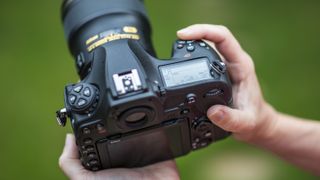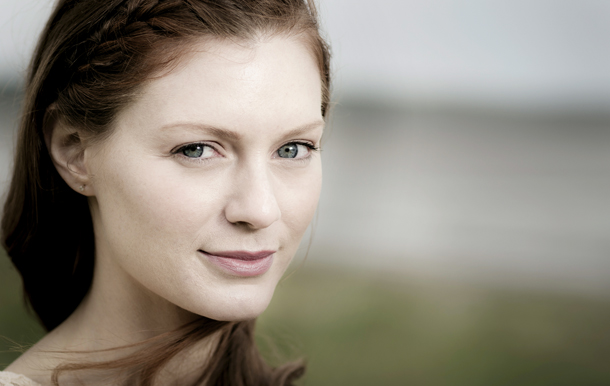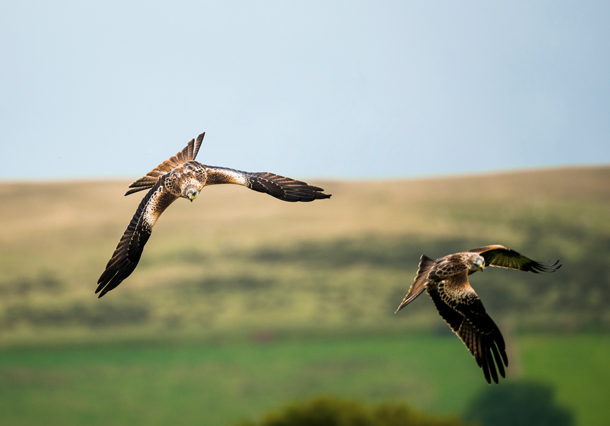How To Work Nikon Camera
ten photographic camera settings you need to acquire to chief your Nikon
Get to grips with your Nikon DSLR

The vast array of buttons, menus and other features available on even the most affordable Nikon DSLR can sometimes seem pretty daunting, especially if you're but starting out on your photographic journeying.
Understanding which features are worth exploring, and which are best left alone, is fundamental to getting the most from your camera.
And then, we've come upward with the 10 most important camera setting that you need to go to grips with to use your Nikon to its total potential.
Nosotros've cleaved these downwards into five sections, where y'all'll find out how to utilize the different focusing, exposure and other modes to help you really have control of your camera.
There are also suggestions for other features to endeavour once y'all've mastered the essentials, to enable yous to take your photography to the next level
There are also suggestions for other features to effort once you've mastered the essentials, to enable you to take your photography to the next level. And we've even included features that are best left alone, at least until you've got the hang of the fundamentals.
These advanced features do have their uses when you're shooting in very catchy or specialised circumstances, but they aren't necessary for the vast bulk of subjects and situations.
So, whether you've just started using your Nikon, or are already an experienced user, y'all'll find enough of handy data well-nigh the different features and modes bachelor on your photographic camera. Read on to larn more…
Essential Nikon camera settings: 1. Focus lock

Even the most sophisticated autofocus systems need you to accept control in social club to focus on off-centre subjects
What is it in a nutshell?
Positioning your field of study off-centre is one of the best ways to meliorate the composition of your shots, but you demand to make sure that your Nikon focuses on this expanse rather than what's in the middle of the frame, otherwise y'all could end up with your subject out of focus and your background pivot-sharp (a problem common to compact photographic camera users). With static subjects, the easiest way to do this is to utilise a technique known as focus lock.
Why is it so important?
Focus lock is the perfect technique to use when you want to vary the composition by positioning the subject area in unlike areas of the frame.
Once you take locked the focus, you tin can position the bailiwick anywhere in the frame, and every bit long as you remain the same altitude abroad, it volition be precipitous.
This is useful on cameras which have a limited number of AF points, as they only allow yous to focus on a limited number of areas within your scene. Using focus lock, you lot can place the subject in areas of the frame where there aren't whatever suitable AF points.
How do you use it?
To utilize focus lock, yous demand to gear up your camera to single shot autofocus mode (AF-S). And so, frame the scene so your subject is in the centre and half-press the shutter release until the camera focuses.
Yous can then recompose your paradigm and then that the subject is anywhere in the frame, but y'all must keep your finger one-half-pressed on the shutter release, and make certain that you don't modify the distance between you and the subject. Then, once you're happy with the composition, you tin can press the shutter fully to take your shot.
What you can ignore: Auto AF bespeak choice
Like many automated functions, the automatic AF point choice tin work perfectly well, merely it doesn't ever pick the AF bespeak that corresponds with the thing that you want to focus on.
Yous'll get more reliable and consistent results past choosing the AF point manually (see Taking it farther), or simply leaving it set to the central AF point and using the focus lock technique described above.
Taking information technology further: Manual AF point selection
While focus lock is a elementary and constructive method of focusing on off-middle subjects, it's not ever the virtually convenient choice. If your field of study is consistently going to be in the same off-centre position for a series of images, y'all should manually select an AF indicate that corresponds to that position within the frame.
This is also the best option if your subject is likely to move closer or further abroad from your camera in the time information technology takes you to focus and recompose.
- Acquire more: ten surefire ways to get yours sharpest ever photos
Essential Nikon camera settings: 2. Focus Tracking

When you're shooting moving subjects you demand to choose the right focus manner to proceed them sharp. Here's how…
What is it in a nutshell?
There are three principal autofocus modes on Nikon DSLRs: single, continuous and automatic. If yous want to rails a moving subject you need to select the continuous autofocusing mode (AF-C).
In this mode the photographic camera will continuously adjust the focus whenever the shutter release is half-pressed, enabling it to rails subjects that are moving towards or abroad from your photographic camera.
Why is it and then important?
Shooting moving subjects is a challenge for any focusing system, so y'all need to cull the right mode in order to give yourself the best hazard of keeping your subject sharp.
Even though the automatic AF mode will switch between single and continuous AF when it detects a moving subject, it's still ameliorate to switch the camera to AF-C manner then that information technology volition continuously track moving subjects.
In continuous mode the camera automatically switches to predictive focusing; this analyses the movement of the subject and tries to predict where information technology will exist at the verbal moment when you fire the shutter.
It'south not completely foolproof, particularly when the field of study is moving erratically, just it nonetheless gives you the highest hit rate of any AF mode for moving subjects.
How practice you apply it?
Once you take chosen AF-C mode, the camera will automatically adjust the focus for as long every bit yous keep the shutter release one-half-pressed. To utilise this way successfully, it'due south important to keep the focus betoken positioned over the subject for equally long equally possible, otherwise the camera will focus on another office of the scene, and yous'll so need to reframe and refocus, which can mean that you miss the perfect moment.
What you lot can ignore: 3D AF tracking
This focusing way relies on the focus locking on to the subject field, and it will then movement the focus point automatically if the subject moves in the frame. This tin piece of work well in some situations, but the camera will e'er struggle to identify the main subject if information technology's close to the background or contains similar tones and colours to the surroundings.
Therefore, in most situations information technology's often better to use a single AF point, and keep this positioned over the subject for as long as you lot possibly tin.
Taking it farther: Dorsum-button focusing
If you lot're shooting fast-moving subjects, it can be difficult to go on the autofocus activated and take pictures at the same time.
The solution is to set upward your Nikon so that focusing is activated by a button on the rear and not the shutter release; this is known every bit dorsum-button focusing. Pro models have a dedicated push for this, just on most other models you lot can assign the AE-50/AF-50 button to it.
- Gear guide: The 10 best Nikon lenses for DX-format DSLRs
Source: https://www.techradar.com/how-to/essential-nikon-camera-settings
Posted by: markshowere.blogspot.com

0 Response to "How To Work Nikon Camera"
Post a Comment